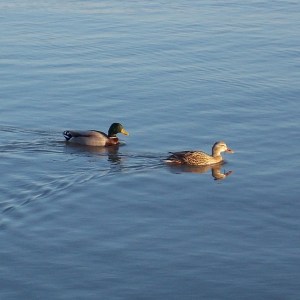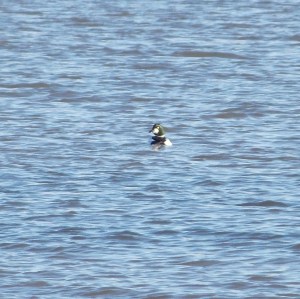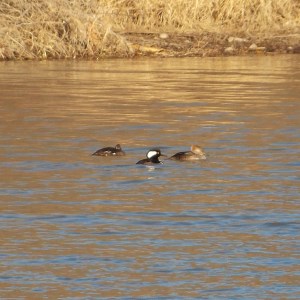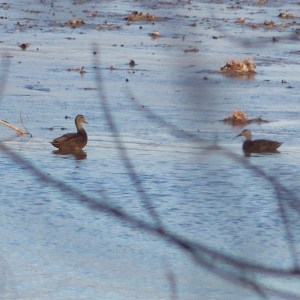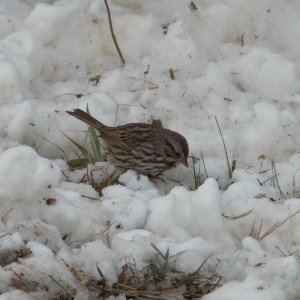I eagerly watched eBird all week for signs of the continuation of Evening Grosbeaks at the Mary Gray Bird Sanctuary in Connersville, about an hour and a half east of Indianapolis. After seeing no updates, I impatiently asked on the Indiana Birding Facebook group if they were still there, and I was met with an affirmative answer! So the first thing I did on Saturday (after cleaning the house and walking the dog) was to pack up and go bird.
I pulled up to the parking lot right at 9:00, and a gentlemen approached my car and asked if I was looking for the Grosbeaks. He turned out to be the resident manager of the sanctuary, and he brought me to the glassed-in porch behind his home where dozens of common feeder birds were feasting on sunflower seeds. I only had to wait about five minutes before the giant yellow beasts showed up, and I owe him life bird #187 and year bird #042! (Thank you!)
Evening Grosbeaks only appear irregularly during the winter in Indiana, and sometimes they don’t show up at all. To be able to see them so easily and at such close range was just awesome. This is just another bird in the great bounty of this winter’s huge irruption.
Year bird #044 was this Yellow-Bellied Sapsucker that was banging away on a pine tree on one of the sanctuary’s many trails. I wasn’t expecting to see this woodpecker until after I had encountered the much more common Hairy Woodpecker, but to date, the Hairy is the most notable absence on my year list.
Continuing the theme of woodpeckers was a Downy Woodpecker, a species that I had previously seen this year. Because they are everywhere.
Another of the already seen and common birds was the House Finch. This one swooped in after the Grosbeaks left and started noshing on seeds. For those keen observers keeping track at home, year bird #043 was this guy’s friend, a Purple Finch, that was hanging out with the flock, but I did not get his photo.
For good measure, here is another common winter bird, the Dark-Eyed Junco.
Since this was the last weekend of January, my total for the month will most likely stay at 44 birds, unless something unexpected lands on my head or I finally see a Hairy Woodpecker around my neighborhood.






